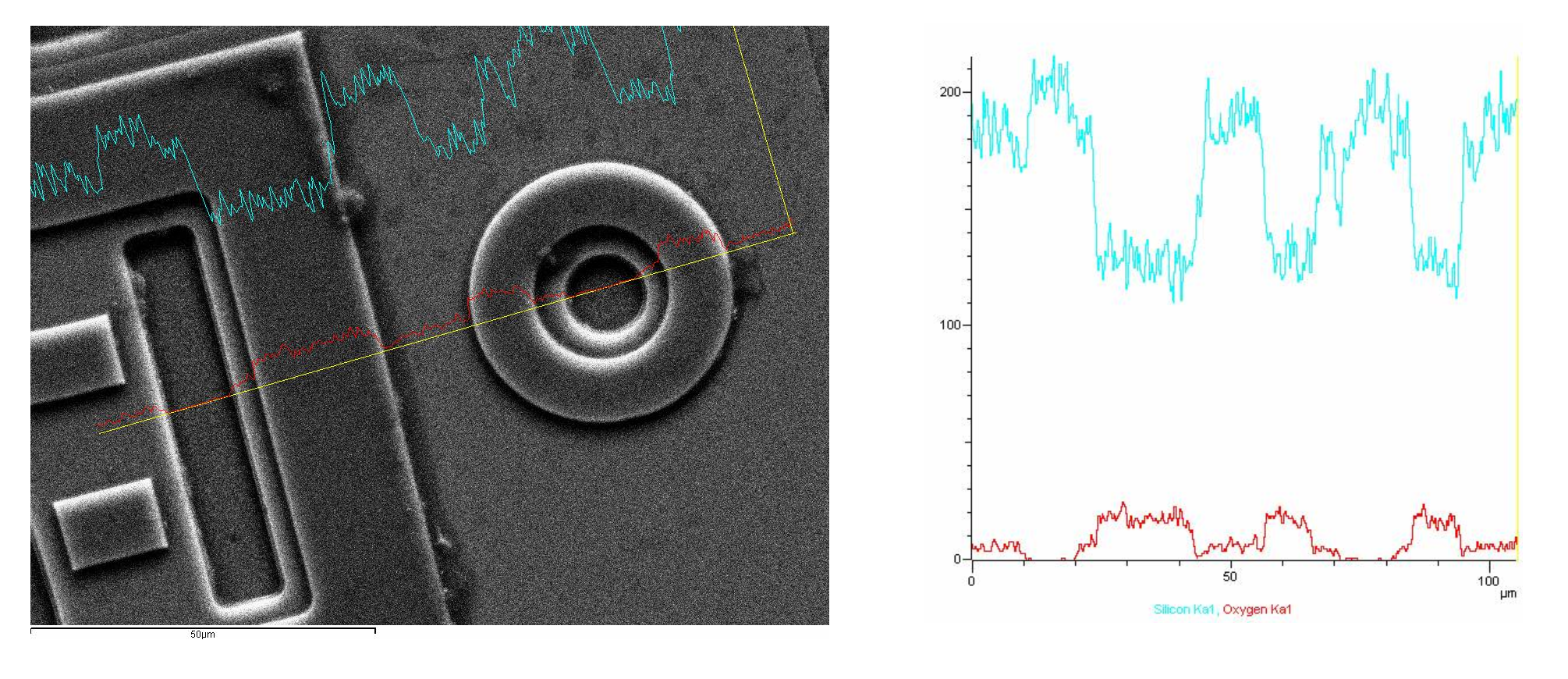Local chemical composition
Local chemical analysis is probably more often demanded service compared
to an analysis of volume properties and also in this case we are not able to satisfy to the requirements
using simple nondestructive methods. There are lots of applications on the market asking for a chemical composition
analysis of the surface instead of an analysis of its shape. It has been also many attempts to create a
method for such an analysis. From scanning probe microscopy point of view the results are achievable only with much effort,
supported with lots of numerical analyses and possible only for certain materials. One of the examples is a chemical analysis
of individual atoms carried out by the group of Pavel Jelínek on the Institute of Physics AS CR. It is possible to get an
information about individual atoms on the sample surface by a combination of a very precise measurement under ultra high vacuum
conditions and quantum mechanical computations. The second example can be an analysis of a localy evaporated sample using a thermal
probe made either by an analysis of the infrared spectrum or by a mass spectrometer. The US company Anasys if working in this field.
Substantiall better situation is in the field of electron microscopy technique and related techniques. Several
methods for a local chemical analysis exist, it is possible to e.g. evaluate a X-ray emitted by the sample irradiated by an electron beam.
Similarly to the electron microscopy domain also here it is expected that the boom related to metrology applications will just come.
In this case the disadvantage consists not only in the demanding sample preparation for the vacuum conditions but mainly in the
uncertainty of the positioning of the electron beam and the uncertainty related to the object where the signal relevant for the chemical
analysis is generated. Owing to the continuously improved devices and numerical recipes the situation gets better and we can soon expect
the moment when an electron microscope will be one of the standard devices in nanometrology.
|
In our department we can make use of these techniques only in collaboration with other institutions.
We use the chemical microanalysis for the ability to confirm or to disprove our assumptions on the material contrast detected by different
scanning probe microscopy methods as shown on the image of a microelectronic component (author of the image is
J. Buršík, IPM ASCR).
|
 |
| Local chemical analysis of a microelectronic component surface |
|

